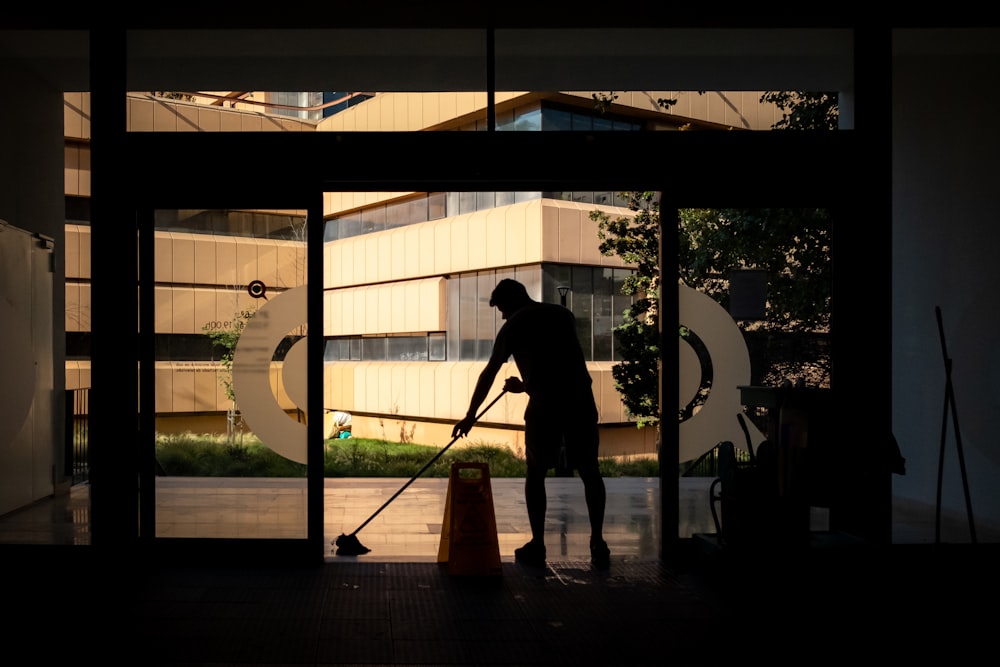Population growth in Aussie cities across the country is growing rapidly, and housing prices are constantly shifting. It is becoming increasingly difficult for house hunters of all styles and backgrounds to purchase a home in the current climate while finding a property that ticks all the right boxes.
Due to the demand for city dwellings, there has been an increase in apartment developments meeting the needs of many buyers, as well as budgets. So, what’s there to know about apartment living in Australia before investing in the keys to the front door? Let’s find out!
What Is An Apartment?
Ok, this sounds like a silly question, but humour us for a second. Let’s make sure we’re all on the same page when it comes to the defining qualities of apartments.
An apartment, which we also refer to as a unit in Australia, is generally defined as part of a building that is a self-contained living space. Apartments are normally in blocks or complexes, with some offering more than 40 residences, contained over multiple stories. They will often have communal areas like grassy picnic zones for kids and families to explore, gyms and pools for fitness junkies and even pet care facilities in more recent developments that complement new laws surrounding pets and strata laws (YAY!).
Units can range in size from studio, a single space that hosts the bed, kitchen table and facilities and lounge room of the people living there, to 5+ bedroom penthouse suites with their own private pool. Depending on a buyer’s financial situation, a range of options can be readily available to them and suit their individual lifestyle needs or the needs of their family.
How Many Australians Live in Apartment Complexes?
From 1991 until the Australian 2016 census, the number of apartments occupied by Australians has increased by 78%. According to the same census, approximately 10% of Australians spent census night within an apartment at that point in time (with 95% of these in their usual apartment home). That is a whopping 2 million (approx.) people.
Through that census data, the Australian Bureau of Statistics also found that occupied apartments are increasing from one for every seven houses in 1991, to one for every five houses occupied in 2016.
The growth we’ve seen tends to happen within urban settings, meaning that a good majority of apartments are in close proximity to a capital city and its centre.
What Type of People Choose ‘The Apartment Life’ in Australia?
The data from the 2016 Census reported that the main age of those living within an apartment was around 33 years old. It was also found that the numbers were slightly more skewed towards females (51%) as opposed to males (49%).
Unsurprisingly, the study concluded that more of the younger generation are opting for apartment living. The reasons for this vary from apartments being a cheaper option to a preference for units over houses due to lower maintenance, but it’s not uncommon nowadays to see many young families living in an apartment rather than a house.

How to Ace Apartment Living
We interviewed renowned Australian Interior Designer, Alicia Xiberras on the art of “acing apartment living!”. Alicia is the Director of AXI, a female powerhouse of Interior Designers with over 15 years experience in residential and commercial spaces.

We asked Alicia, ‘What are your top 5 design tips to ace apartment living?’.
“We recently designed an apartment in the heart of the Sydney CBD district, the project was called Australian indulgence. When we designed this apartment for our clients it was fundamental we considered these topics, to achieve the perfect apartment lifestyle for our clients.” said Alicia.
Let’s find out what Alicia’s Top 5 tips to acing apartment living.
*You will want to TAKE NOTES!*
Take Notice of Noise
“This is fundamental with apartment living as it can impact your wellness and sleep cycles.”
*No one wants to be woken up by the sound of a truck going down the highway at 4am*
“Consider acoustics, like rugs or fabric furnishings within your apartment to collect any excess sound. ”

Natural light – How much do you really want?
“Bring the outside in and don’t be afraid to consider window furnishings that allow complete sunlight to saturate the apartment. Its still important to also ensure that you can still have complete privacy or block out.”
Designer Tip: “A double roller blind, with block out & sheers overlaying will be an ideal selection for apartment living.”

Furniture size can impact how the space feels
“If you are concerned with working with a tight or small space, always consider the scale of furniture in the room.”
For example, “if you have circulation issues, instead of a rectangle dining table top, consider an oval top, this allows a softer curve and further circulation around your dining table.”

Accessorizing
“I avoid over accessorizing in styling and décor. This can make the apartment feel cluttered and overdone.”
Designer Tip: “Remember that old fashion quote ‘less is more’!”

Colour pallets
“Avoid loud and dark colour pallets when the space is small!”
*Does anyone remember Matt & Kim’s ‘Panic Room’ from The Block 2013? – You don’t want to, what a nightmare! *

Source: Channel Nine
Designer Tip: “Remember to work with your space and not compete with it.”
Want to check out some of Alicia Xiberras’ work? Head to her website, you won’t be disappointed!

Apartment Living Pros & Cons
The apartment lifestyle isn’t for everyone, but it certainly does have some great benefits. If we can provide one piece of advice to future apartment owners, it is that versatility and convenience are absolutely key when looking at the benefits of a particular apartment, and its location.
Pros for Apartment Residents

1. Affordability
A major plus in terms of apartment living is the cost to purchase. For first home buyers, a $500,000+ price tag on a house can be super daunting and often seem entirely out of reach. It’s a struggle, we get it. Wages aren’t on the rise, but house prices are #gofigure. Here’s where apartments provide a solution.
According to Canstar, apartments are priced at almost $200,000 less than median house prices which are approximately $800,000 in capital cities. This makes them much more affordable for both first home buyers and those looking to expand their existing portfolios.
Units and apartments are a fantastic way for new investors to break into the property market, considering how much they will be saving. Making a solid investment just became much easier to afford.
It also tends to be easier to find tenants to rent out to, if the property is in a good location (most units are based in or around capital cities), plus there are fewer costs associated with the upkeep of a unit as opposed to other property types.
2. Access to Shared Facilities & Amenities
Many complexes, especially those in high-rise buildings, often come standard with facilities such as a pool, gym, and even outdoor communal areas like small parks for entertaining family and friends and for letting the kids run wild and free. Want an excuse to meet the neighbours? Hang out in the communal spaces every so often and you’re sure to pick up some new acquaintances.
On top of this, gym memberships, for example, can cost upwards of $100 per month. With a gym on-site and available for residents to use without additional fees attached, that 100 dollarydoos can go towards buying an extra pack of protein powder or, like, 150 potatoes for carb loading. Think of the gains, people!
3. Insurance Savings
Apartment living is a sure-fire way to save money on home insurance. Often house/building insurance is paid for by body corporate fees, meaning that the resident only has to pay for insurance on their contents within the apartment, such as furniture and electronics.
4. Less Maintenance
One of the main reasons people live in apartments is the fact that they generally require less maintenance than a house.
Apartment complex amenities like a communal outdoor space and even the building itself are generally cared for through the strata body or the landlord, meaning that the resident need not fret about having to mow the lawns or clean the gutters.
A comparatively small space for living in can also be a benefit in regards to household maintenance, as less space means less cleaning. I think we can all get around that!
5. Exciting Lifestyle
Because a lot of apartments are based in areas close to cities or areas with lots of attractions or business precincts, you can generally expect to be close to public transport and other super convenient amenities. This can help reduce living and travel expenses, while also providing a lifestyle full of excitement, fun and good food which is usually high up on the ‘must-have’ list when it comes to buying a home.
6. Convenient Location
A great location close to the city is often the biggest drawcard when people consider apartment living. For many Australians, buying or renting an apartment means they can live in close proximity to a city and all its attractions at a much more affordable price. The city is practically their backyard to explore!
7. Security & Peace of Mind
Apartment buildings tend to have extra security when compared to other properties. Nine times out of ten, buildings will have a communal entry area that is locked for resident-only access, and many new developments come equipped with surveillance cameras, secure parking and security doors.
With neighbours close by and above ground level units difficult to reach, it is much riskier for criminals to attempt an apartment break-in, as opposed to entering a house. Apartments located in more extravagant buildings may also have a security guard present on site.
For families with young children and, honestly, anyone who isn’t a fan of dealing with break-ins (most people, we assume), living in a unit can provide some serious peace of mind, in that sense.
8. Sustainability
Think about it; less air conditioning usage due to smaller spaces, fewer living areas to fill with furniture that will eventually end up in landfills and a whole other slew of aspects that help old Mother Nature live her best life.
Cons of Becoming Apartment Dwellers
1. Space Can Be Limited
While apartments are cute and cosy, they often have limited space when compared to other types of residences. Many apartments are often compact, which can be a slight drawback for those with a large family who need more space and lots of storage.
Also, some smaller and older apartments may not have room for an internal laundry, meaning the resident must use external laundry facilities provided on-site or at a laundromat or dry cleaner.
Families can often find apartment living difficult due to the limited areas for children and lack of private backyard space. If you love a balcony view, you’ll enjoy living in an apartment, but if you need a backyard for kids or pets, it may not be the best option.
2. Noise & Privacy
It’s no secret that the high-density housing situation of apartment design can often affect privacy. In some complexes, the balcony areas of each apartment may be close together, and any communal space, such as the pool, will have to be shared with neighbours who live within the building.
Noise may also pose an issue, especially for apartments located close to the inner city. Sounds from the street can filter into a unit from below, while the struggles of neighbours fumbling for their front door keys or hosting gatherings in a small apartment can prove to be an annoyance as well.
3. Parking Availability
Unlike houses with private garages and driveways, apartments can often limit the ability of residents to park nearby. It is quite common for high-density apartment buildings to have limited parking and in some buildings, private car parks don’t come standard with the purchase of the unit.
Those residing within large complexes often have to seek paid secure parking away from the apartment, or turn to street parking which comes with its own risks.
Sure, the complex may offer communal parking spaces on-site, but there’s no guarantee that Larry from across the hall isn’t going to drive in just before you make it home and take the last available spot. Classic Larry, amirite?
4. Strata Fees & Restrictions
Apartment living can be a little more restrictive than residing in a house. Any changes to the external area of the unit are subject to body corporate approval, as well as potential restrictions on noise levels, the ability to have pets within the building, and the use of the shared facilities.
In some cases, there may be ongoing costs associated with the general upkeep of the building and the communal areas.
5. Lower Potential for Renovations
Thinking more about the future of the property, it is far less likely a resident would be able to carry out major renovations on an apartment than a house.
Firstly, the body corporate of the building must be made aware of any planned changes to the external area of the home, as noise from construction could upset the neighbours.
It can also be difficult to change internal fixtures and the floorplan layout within an apartment, as ceilings and walls are considered a shared space, whilst plumbing is a huge pain to access and move around.
How to Access Home Loan Options When Buying an Apartment
The home loan process when purchasing an apartment is much the same as that of purchasing a house.
A property expert like those in our team at Liviti can often provide much-needed assistance throughout this process. It’s important to have the right people on your side when discussing home loans as some banks may not be willing to lend, depending on the size of the apartment and the location when compared to a buyer’s circumstances.
How to Buy an Apartment in Australia?
At Liviti, we have quality information and research right at our fingertips, allowing us to offer advice that leads to informed and clever decision-making surrounding the purchase of an apartment.
Aside from that, carrying out your own research online usually won’t hurt and can help ensure that the loan option you choose is perfect for you and your financial situation.
Whether you’re after a studio living space or an apartment with a little more room for families, we’ve got you completely covered! Check out our current listings and come chat with us if any tickle your fancy.














